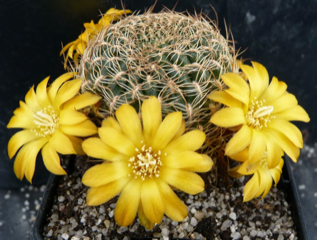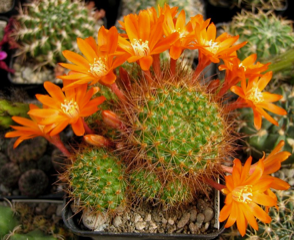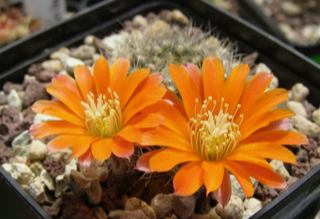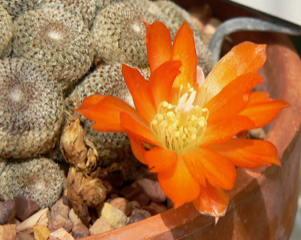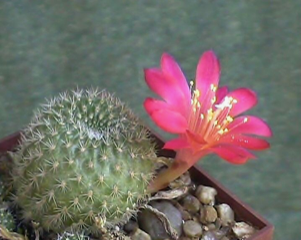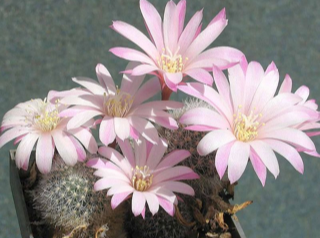Submitted by: Jim Tanner
Rebutia is a genus in the family Cactaceae, native to Bolivia and Argentina. They are generally small, colorful cacti, globular in form, which freely produce flowers that are relatively large in relation to the body. They have no distinctive ribs, but do have regularly arranged small tubercles. They are considered fairly easy to grow and they may produce large quantities of seeds that germinate freely around the parent plant.
The limits of the genus are currently uncertain – in particular whether or not it includes species formerly or currently placed in the genera Aylostera, Cintia, Sulcorebutia and Weingartia. The number of species included varies widely from source to source. A very large number of plants that have been treated in cultivation as species of Rebutia are now generally regarded as varieties, forms or synonyms of a much smaller number of species.
The genera Aylostera and Weingartia are now generally included in Rebutia.
Rebutia and Sulcorebutia are both genera from the highlands of Bolivia and Northern Argentina. They are similar in appearance, in habitat and culture. Coming from high altitudes, they are both tolerant of cold, and if dry, can be left out in all weather. The populations of Sulcorebutia and Rebutia overlap, but they no natural hybrids are known.
There has been debate from the start on whether or not Sulcorebutia and Rebutia are the same genus. Some would combine the two under Rebutia, others would rather split Rebutia into several genera. The issue will ultimately be settled by genetic studies. For the present they are treated as separate genera, and they appear this way in almost all references, catalogs and show schedules. Both genera cover large altitude ranges, and many species are so variable that collections from nearby populations, or even the same population at different times have been given different names. There are far more names than species. The books by John Pilbeam help make sense of the species and varieties.
Both genera are easily grown. They are dormant in winter, and start to grow in late March or April. They flower from April through June, with the peak flowering period varying from year to year depending on the weather. Two flowering cycles are common in cultivation in California. The flowers are almost always numerous, and vary in color from purple and red through orange to yellow. They do well in normal compost, and grow best with steady fertilization, when in active growth. They are both attractive to spider mites. Damage can be prevented by frequent inspection, and a weekly, forceful wash down with water..
Tom Glavich
LATIN LOOKUP – Loquerisne Latine (Do you speak Latin)?
The meanings of latin plant names on this page – from http://davesgarden.com/guides/botanary/
- flavistyla [flav-ih-STY-la]
Having a yellow or yellowish style. - minuscula [min-oo-SKYOO-luh]
Very small. - muscula [MUS-kuh-luh]
Diminutive of Latin mus (mouse, or muscle). - Rebutia [ray-BEW-tee-uh]
Named for Pierre Rebut, 19th century French cactus dealer and expert.
